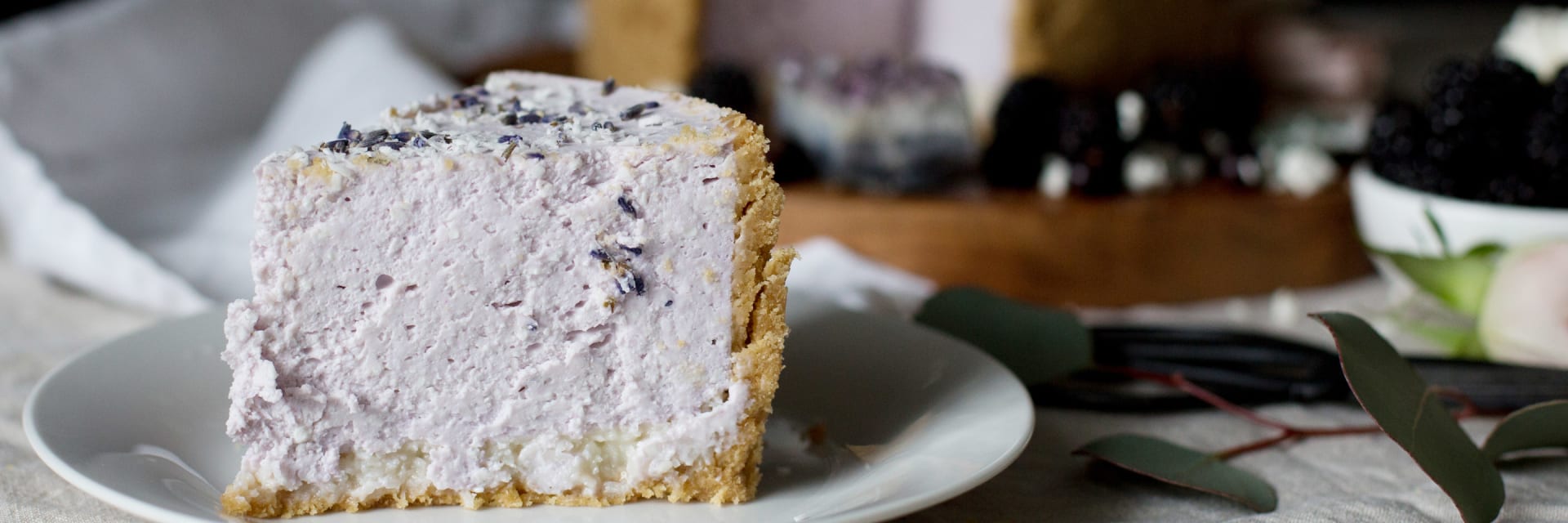Frequent search terms

- COMPO
- Guide
- Inspiration
- From the garden to the table
- Cheesecake with lavender
Cheesecake with lavender and white chocolate
We are familiar with the fresh scent of lavender in the soap in the bathroom or the lavender bags in the wardrobe, but the aromatic plant is also being used more and more in cooking. We show you how to conjure up a brand-new taste sensation with the small purple flowers from your garden at home. In this article, lavender flowers, whole-grain shortbread biscuits and ricotta are combined to make a delicious lavender cheesecake.
Table of content
Lavender cheesecake
Ingredients
For a roughly 23 cm springform tin:
- 200 g of butter & and a little more for greasing
- 200 g of whole-grain shortbread biscuits
- 200 g of white chocolate
- 6 g of dried lavender flowers
- 100 g of sour cream
- 200 g of mascarpone
- 200 g of ricotta
- 200 g of cream cheese
- 2 eggs
- Purple food colouring of your choice
Lavender cheesecake
Method
Base
First line the base of your springform tin with baking paper and grease the sides well with butter. Then crush the shortbread biscuits in a freezer bag with a rolling pin until you have an even, fine mixture. Now melt the butter in a pot and mix well with the crushed biscuits. Pour the butter and biscuit mixture into the springform tin, press with a tablespoon and place in the fridge for one hour to set.

Filling
Now it is time to create the natural lavender aroma while the base sets. To do this, gently warm the lavender flowers with the sour cream in a pot and then leave the mixture to infuse for one hour.
Now you can get started with the cheesecake filling. First melt the white chocolate using a bain-marie. Whisk the mascarpone, ricotta and fresh cheese with the eggs in a bowl, then add the melted chocolate and the lavender and sour cream mixture.
If you like, you can give the filling a lavender colour by adding a little purple food colouring. To do this, add just a few drops to the mixture and stir slowly until you get the shade you want, otherwise the colour can quickly become too dark. You can also mix red and blue food colouring to create a nice shade of lavender.

Baking
Now pour the filling into the springform tin and smooth it down. As small amounts of butter can leak from the base of the springform tin when it is heated, the oven tray should also be covered with baking paper to prevent the oven from getting dirty. Then slide the cake onto the lowest shelf of the oven at 150°C (top and bottom heat) and bake for one hour.
If necessary, cover the cake with aluminium foil after some time to prevent any unwanted browning. Do not open the oven door once the baking time is over, let the cake rest for another hour in the switched-off oven. Then open the oven door bit by bit and reduce the temperature around the cake slowly and steadily. This prevents the cake from collapsing.
Leave the finished cake in the fridge overnight.
You might also be interested in these topics








